China's Talent Paradox in a Shifting Workforce Landscape
China is facing a demographic decline that raises significant questions about the future of its workforce. Paradoxically, however, urban employment is expected to not only persist but grow through 2045, largely fueled by rural-to-urban migration. While this shift boosts productivity in urban areas, it underscores a broader challenge: sustaining workforce numbers and economic productivity across the country as the total working-age population begins to contract.
Urban Workforce Growth
The urban population is projected to expand significantly, with the urban workforce expected to reach 537 million by 2044, largely due to rural-to-urban migration. This migration brings positive economic implications since urban centers are three times more productive than rural areas. However, the overall working-age population (ages 15 to 74) has declined since 2023, and rural working-age numbers have decreased since 2005.
Although urban working-age numbers will continue growing through 2044, the overarching trend of population decline suggests that urbanization alone may not guarantee long-term workforce sustainability. The total employed population has been shrinking since 2015, a decline projected to continue through 2065.

China’s Talent Clusters
Over the next decade, China’s education system will produce a substantial surplus of graduates, especially in engineering, positioning the country as a leading source of talent in this field.
The ASPI Technology Tracker analyzes the career path of researchers who authored highly cited papers (top 10%) between 2019 and 202, categorizing their trajectories into three stages, each associated with a different country: the country of their undergraduate studies, the country of their postgraduate training, and the country of their most recent institutional affiliation.
Using the ASPI Technology Tracker framework, we can position China’s talent across three clusters: sectors where China is a global talent leader, sectors where it is a close challenger, and sectors where it remains a distant challenger.
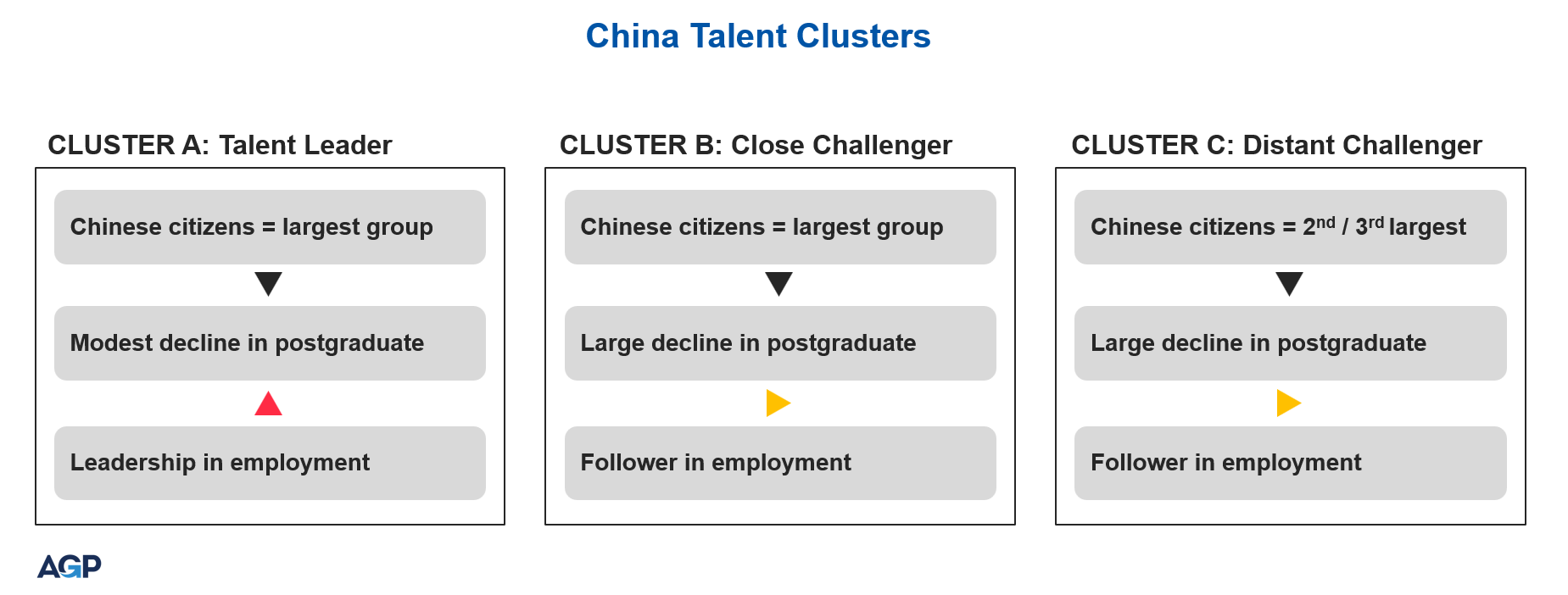
Talent Leader: China leads in talent for certain technologies, such as electric batteries, AI algorithms, and hardware accelerators.
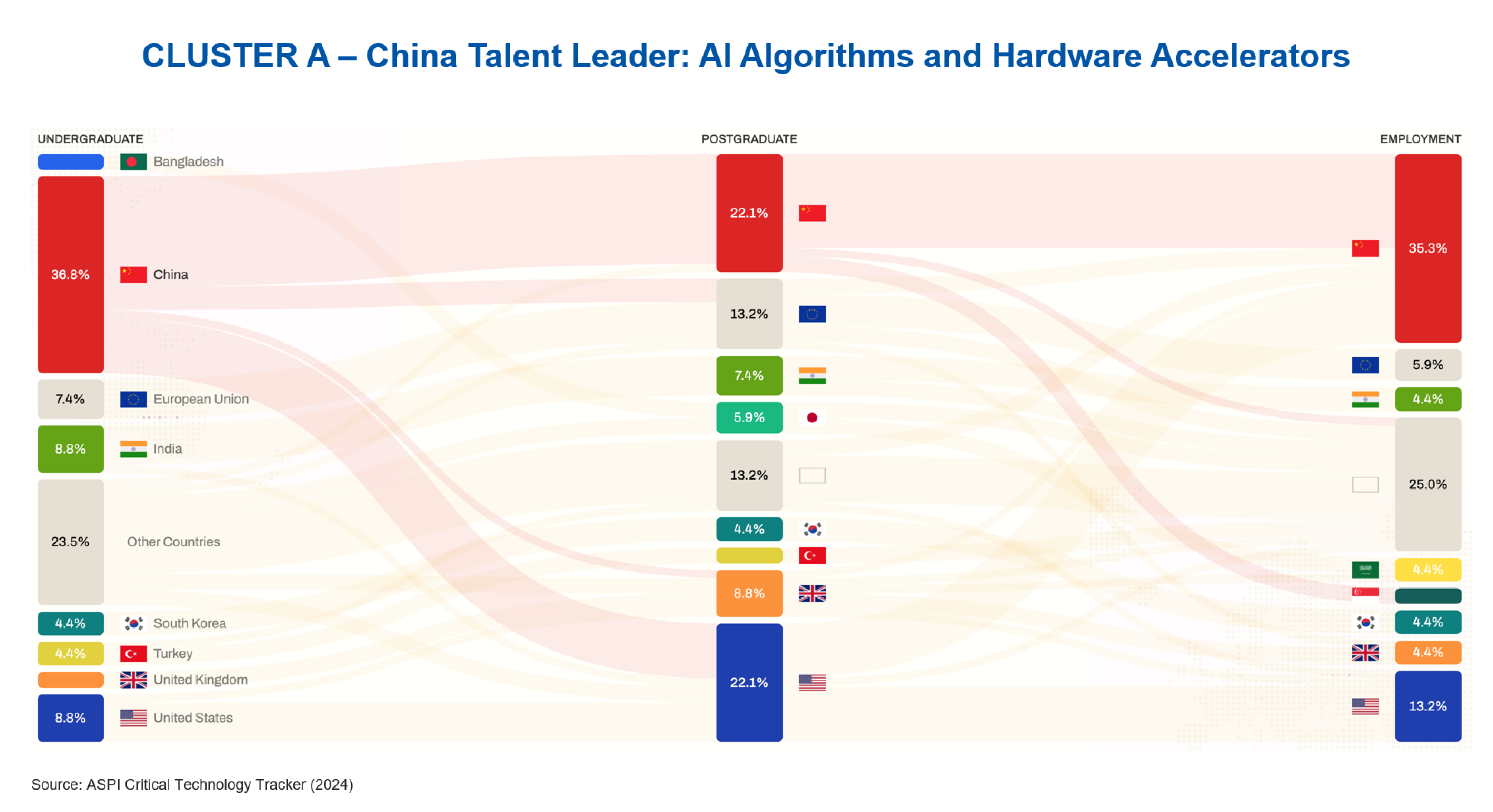

Close Challenger: In fields where China is a close challenger, such as machine learning and high-performance computing, the critical question is whether the surplus of highly skilled Chinese researchers will return to China or continue working abroad.
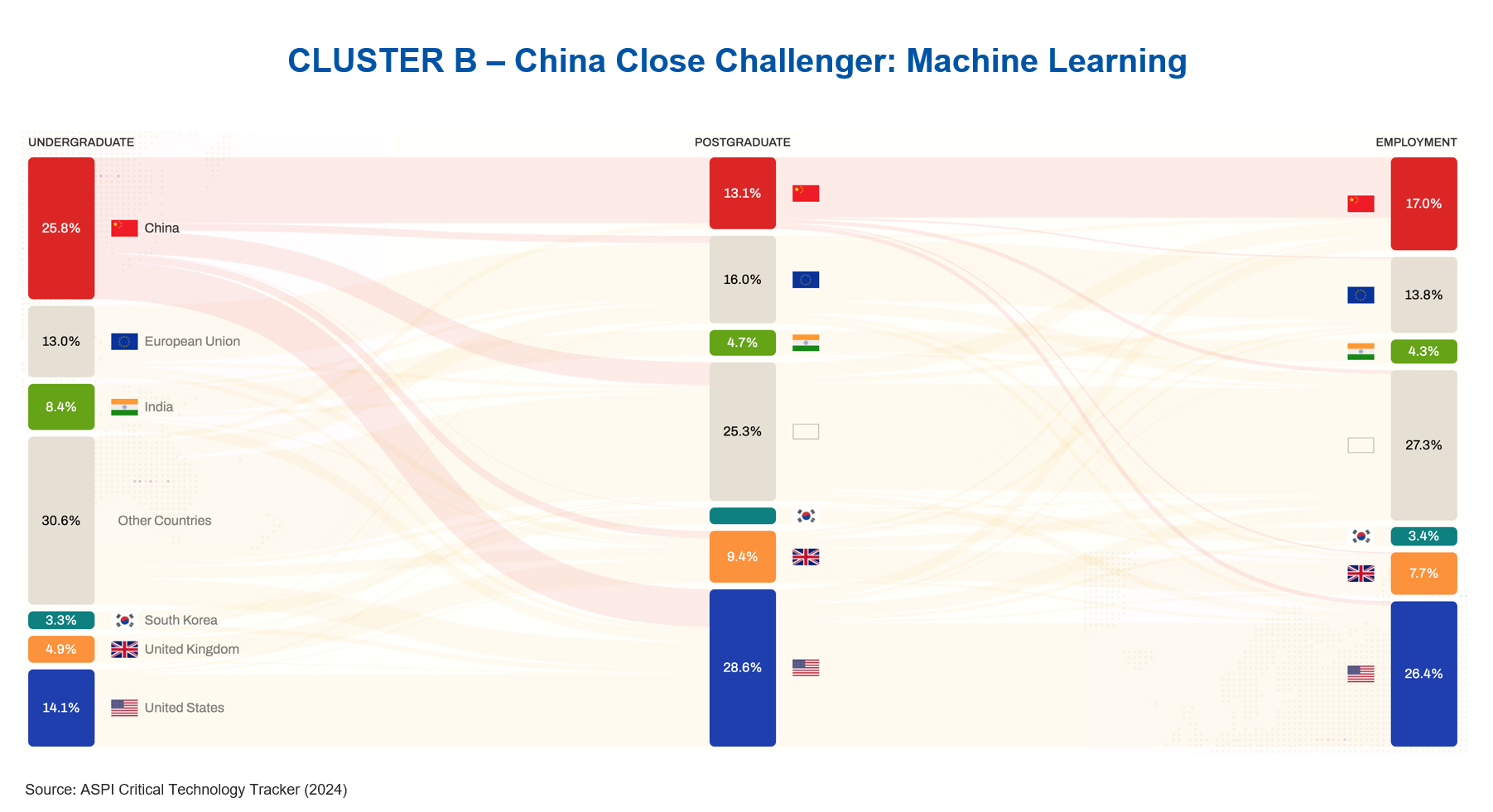
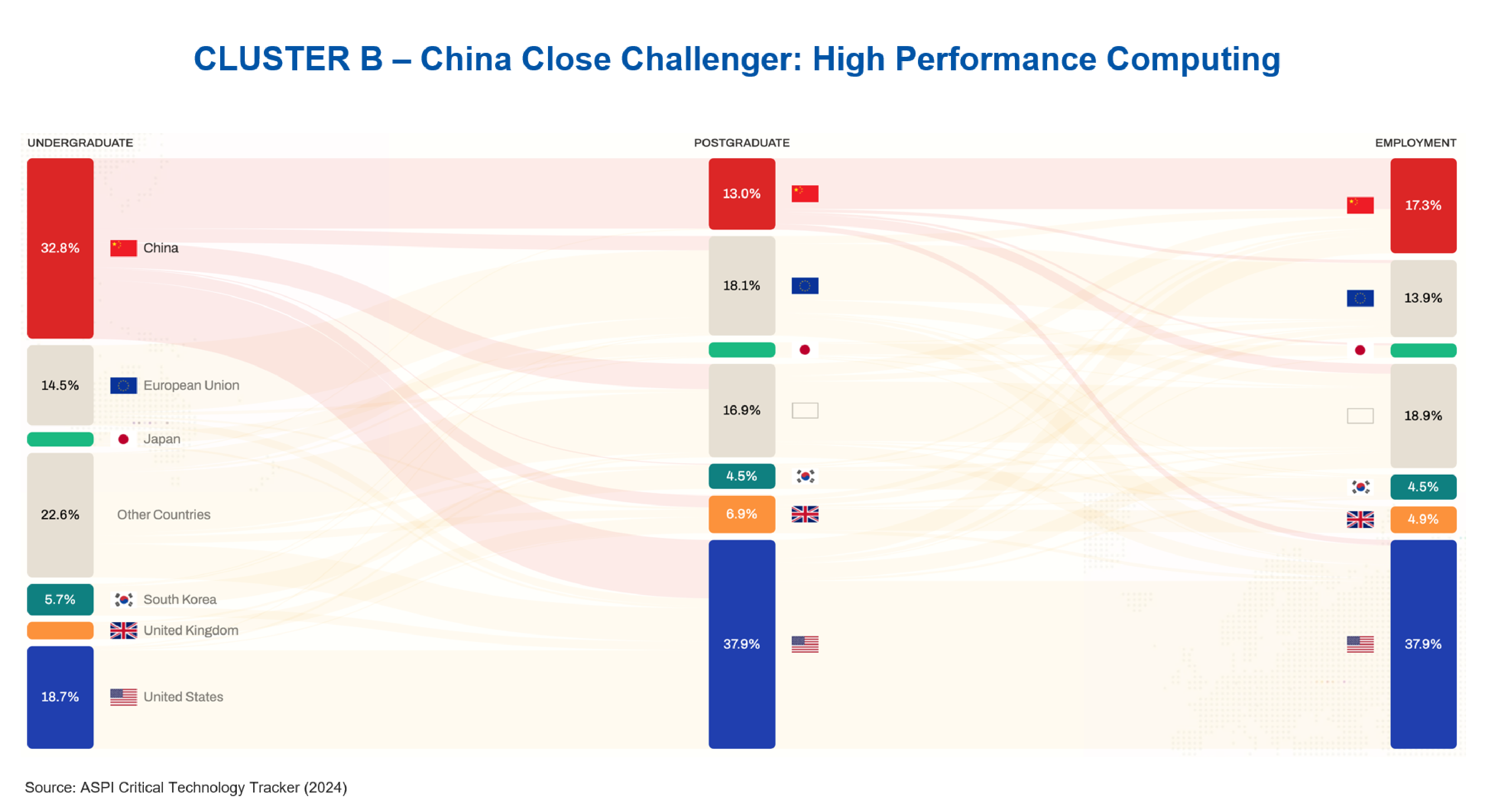
Distant Challenger: Finally, there are fields in which China remains a distant challenger, often in areas where the U.S. has a dominant research position, such as quantum computing and genetic engineering.

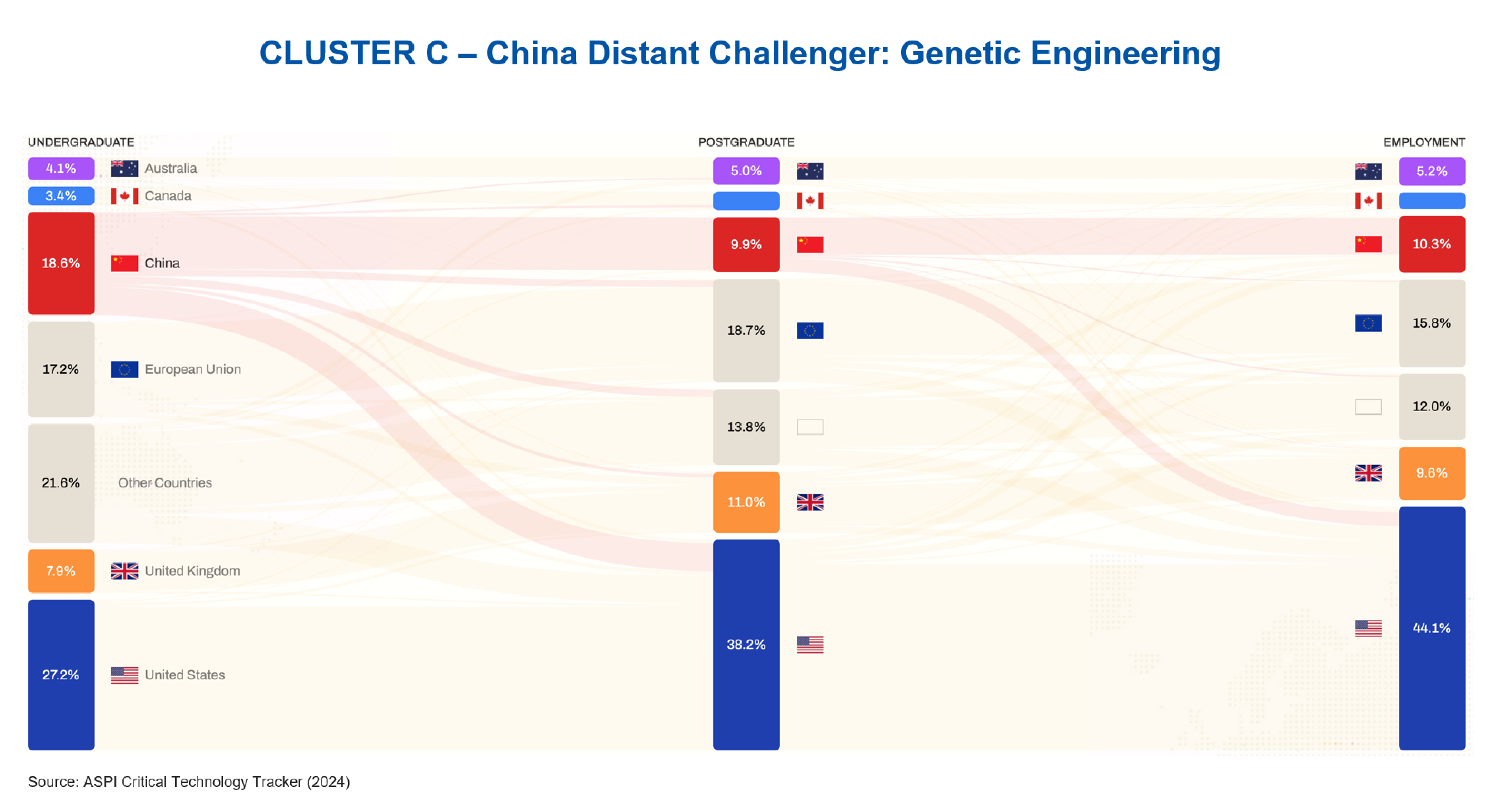
The Challenge of Retaining Talent
In fields where China is a close challenger, a pressing issue arises: will China’s highly trained talent choose to return home or continue seeking opportunities abroad? If the country aims to leverage its talent pool effectively, it must do more than produce experts; it must ensure that these professionals have access to fulfilling and impactful careers within its borders. This requires building an ecosystem that supports and advances their expertise. Without action, China risks turning this talent into one of its largest exports—a pool of highly skilled workers contributing to innovation in foreign economies.
Final Thoughts
For China to sustain its position as a formidable player in the global talent arena, even in fields where it currently holds a close or distant challenger role, it should consider:
Create attractive domestic opportunities: Developing advanced research institutions and private-sector roles that match or exceed opportunities abroad is crucial to retaining top talent.
Expand investment in emerging fields: China’s distant-challenger status in quantum computing and genetic engineering highlights the need for targeted funding and policy support in these areas, reducing dependence on external advancements.
Address graduate employment bottlenecks: While a surplus of engineering graduates signals strength, it also requires expanding job opportunities in alignment with their skills to prevent underemployment or brain drain.
Related Insights.











